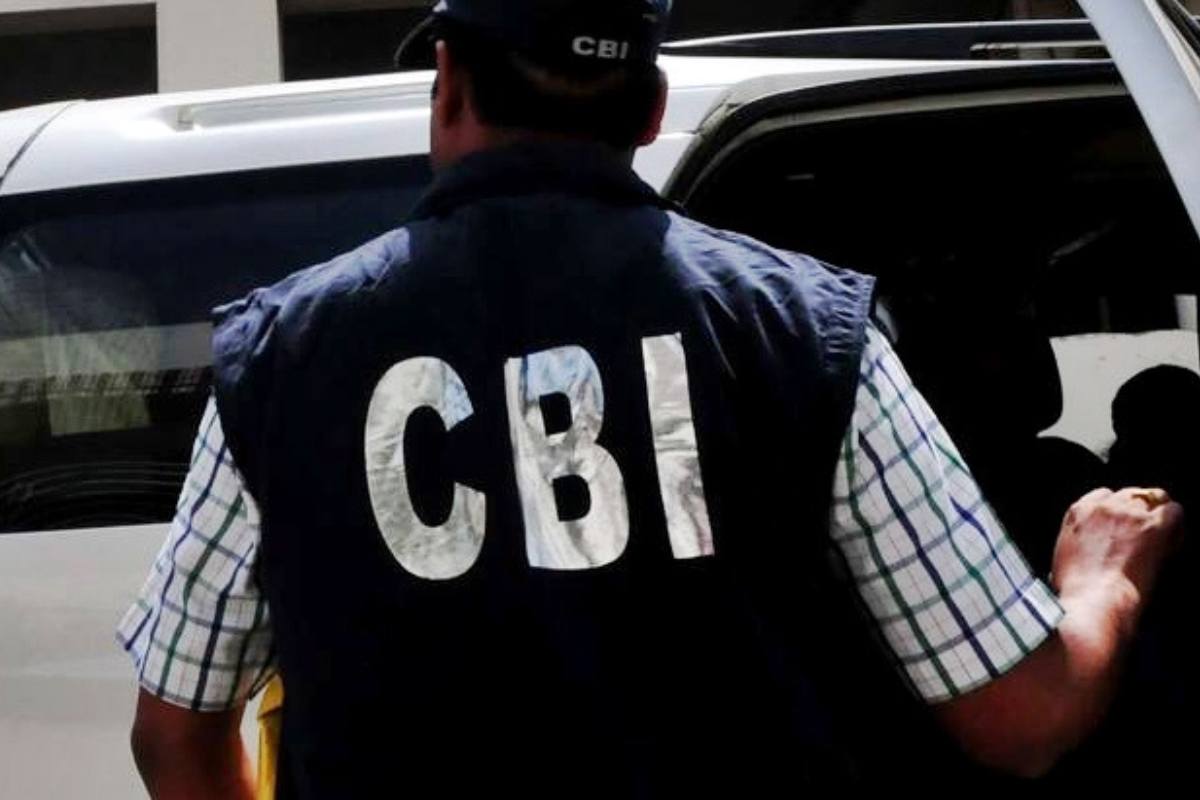Inside the Raid That Exposed an Elaborate Scam Targeting US and Canadian Citizens
Funny thing is, even in a world bristling with antivirus software and endless digital warnings, scams keep finding new ways in. Sometimes they’re subtle, but sometimes, like in Nashik this week, they’re hidden in plain sight, humming along in a luxury resort, dozens of miles from Mumbai’s neon sprawl.
Rainforest Resort, Igatpuri, Not Your Average Tourist Hideout
Let’s set the stage: Igatpuri, a scenic spot in Maharashtra’s Nashik district, usually known for rolling hills, rain-drenched mornings, and, if you ask city-weary travelers, retreat. But behind closed doors at the Rainforest Resort, the Central Bureau of Investigation (CBI) found something wildly unexpected. Not yoga. Not nature workshops. But a buzzing, high-traffic call center, manned by over 60 fast-talking operators.
That’s right. Not vacationers, not hospitality staff, the rooms were filled end-to-end with computers, headphones, scripts, and, well, the art of technical deception.
Unmasking the “Amazon” Illusion
Here’s the kicker: These weren’t just any operators. They were, allegedly, the backbone of a cybercrime operation targeting tech-wary citizens across the United States and Canada. Their pitch? Classic tech-support panic.
Picture this: you get a call, it’s someone from “Amazon Technical Support,” and the urgent tone alone gets your nerves jumping, and your wallet opening. Gift cards, cryptocurrency, you name it. They’d take it, all under the polite, “just-helping-you” mask.
The Dismantling: When CBI Came Knocking
But this time, the CBI tiptoed through the shadows and caught the fake tech-support syndicate in full swing.
- 62 employees found, headsets on, fingers racing over keyboards, caught mid-script, talking to live targets overseas.
- Five masterminds arrested in the swoop: Vishal Yadav, Shehbaz, Durgesh, Abhay Raj (also called Raja), and Sameer (aliases Kalia and Sohail).
- A staggering trove of loot: 44 laptops, 71 mobile phones, stacks of digital evidence. That’s not all. Investigators hauled in ₹1.2 crore in unaccounted cash, 500 grams of gold, and seven gleaming luxury cars, plus proof of shady cryptocurrency transactions worth about 5,000 USDT (roughly ₹5 lakh) and Canadian gift cards totaling around ₹1.26 lakh.
Honestly, you couldn’t dream up this haul if you tried.
Anatomy of the Cyber Racket, From Mumbai to America’s Living Rooms
How does a scam on this scale come about? Turns out, the Nashik gang (led largely by six individuals from Mumbai) didn’t stumble into it. Their organization mirrored real business setups:
- Hierarchical Roles: The workforce was split into “dialers” (those making the calls), “verifiers” (convincing the confused targets), and “closers” (the ones who, frankly, squeezed the payment out).
- Sophisticated Scripting: They stuck to detailed call scripts, some allegedly mimicking real Amazon protocols.
- Seamless Laundering: Victims paid via digital gift cards, wire transfers, or cryptocurrency, methods engineered to erase the money’s trail by the time anyone sniffed the scam.
- Collusion with Insiders: Authorities suspect that unidentified private individuals and even some bank officials might have provided backend “assistance.”
Who Were the Victims?
Let’s not sugarcoat this. The prime targets weren’t distracted locals; they were, for the most part, foreign nationals:
- Primarily US and Canadian citizens: Many older or less tech-savvy, facing carefully-scripted “support” that preyed on their fears of hacking or account takeovers.
- Victims enticed with fake account breach alerts: Scammers would warn that their Amazon account had been compromised or locked, and only urgent intervention (read: financial transfer) could keep them safe.
- Payments made through gift cards and crypto: Virtually untraceable once redeemed.
And not just one or two…hundreds, if not thousands, had already been duped before CBI got involved.
The Final Tally: What Was Seized?
The numbers, frankly, are jaw-dropping.
| Seized Asset | Details/Value (Approx.) |
| Unaccounted cash | ₹1.2 crore |
| Gold | 500 grams |
| Luxury Cars | 7 units (est. ₹1 crore total) |
| Laptops | 44 |
| Mobile Phones | 71 |
| Cryptocurrencies (USDT) | 5,000 (nearly ₹5 lakh) |
| Canadian Dollar Gift Vouchers | C$2,000 (approx. ₹1.26 lakh) |
| Active employees at raid time | 62 |
| Digital evidence (incriminating data) | Numerous hard drives, documents |
The Investigators Crack Down: Operation Chakra-V and International Collaboration
The unraveling of the scam wasn’t just a stroke of luck. It was months in the making, part of the CBI’s sweeping Operation Chakra-V. This nationwide drive is designed to hunt down cyber fraud, with special attention to call centers targeting victims abroad.
Believe it or not, this Nashik bust isn’t an isolated win. Indian authorities have been collaborating more and more with overseas agencies, including the FBI and even Microsoft in other parallel cases, pooling intelligence on cross-border financial crimes. The use of anonymous VoIP calls, Bitcoin wallets, and “spoofed” phone numbers made tracking tough, but not impossible for the CBI’s dedicated cyber squads.
Nashik: A New Hub for Scams?
You might ask, Why Nashik? The answer speaks volumes about changing scam tactics:
- Distance from urban scrutiny: Big metros like Mumbai draw lots of police, and, lately, press. Smaller cities and holiday zones offer the anonymity scammers crave.
- Easy access to digital infrastructure: Resorts and hotels can easily be rented, equipped with high-speed internet and, conveniently, plenty of rooms to convert into makeshift offices.
- Local contacts: Many syndicate members are Mumbai natives, but they branched out to avoid detection.
How the Scam Worked: Step by Step
Ever wondered what exactly happened on those calls?
- Initial Contact: Victims, typically North Americans, would get a call, email, or pop-up warning. It would look legit, as if from Amazon.
- Social Engineering: The scammer would offer to fix a “locked” or “compromised” account if only the victim could provide remote access, some personal details…or, fastest of all, an Amazon gift card payment.
- Escalation: As soon as the victim hesitated, another “team member” (the “verifier” or “closer”) would step in, escalating the urgency.
- Extraction: Payment would be processed in ways that could not be reversed, crypto wallets, gift cards, or instant wire transfers.
All day, every day, the cycle kept spinning.
Arrests and the Ongoing Investigation
So far, five major arrests. The sixth accused is still on the run. And that’s not all, several bank officials and private “unknowns” are also suspected of having abetted the ring through complacency or complicity.
CBI sources confirm that the charges include conspiracy, cyber fraud, criminal impersonation, and, potentially, if financial trails link up, money laundering and violations of international cybercrime laws.
Wider Context: The Growing Threat of Tech Support Scams
India has found itself in the global spotlight as a major source (and victim) of cyber fraud in recent years. With call center infrastructure everywhere and skilled English-speaking operators available for hire, scam organizers can mimic the style of US-based customer support.
Globally, tech support scams generate billions of dollars annually. In the US alone, some estimates pin consumer losses to tech impostors at over $300 million a year. Senior citizens are disproportionately targeted.
Complicating matters, call centers that once supported legitimate business operations have, in isolated cases, “gone rogue.” Law enforcement around the world is responding with joint operations, emphasizing that cybercrime respects no national border.
Precautionary Tales: How Not to Get Fooled
The fallout? It’s not just legal. Every big bust like this, like a rock thrown into a pond, sends ripples across the web.
So while CBI spokespeople kept the focus on India-Canada-US relations, ordinary internet users everywhere need to:
- Never share passwords or OTPs over a phone call.
- Always verify the source of “support” calls independently through official company numbers.
- Be skeptical if payment is requested exclusively through difficult-to-trace methods (gift cards, crypto).
- Don’t give remote access to computers unless completely certain of the caller’s identity.
- Report suspicious contacts to local authorities and, if relevant, to platforms like Amazon or Microsoft.
Simple stuff, but in the heat of the moment, even smart folks get caught.
The Fallout for Corporate India and Law Enforcement
For Indian industry and law enforcement, every scandal has a silver lining: a chance to reinforce safeguards, beef up cooperation, and show they’re serious about tackling white-collar cybercrime.
CBI, thanks to its cross-border links, has pledged ongoing vigilance. More arrests are expected. And yes, the hunt is still on for elusive masterminds, some of whom may, authorities fear, already have offshoots in other cities.
CBI’s Official Word
Quoting the CBI’s official statement: “It was alleged in the FIR that the accused persons entered into a criminal conspiracy with each other and other unknown persons, and have committed financial fraud by impersonation and making phishing calls/deceptive calls, from an illegal call centre, posing as Amazon Support Services Call Centre.”
Short, simple, and, if we’re being honest, chilling.
Conclusion: A High-Tech Crime with Old-School Greed at Its Core
The Rainforest Resort may soon resume hosting vacationers and honeymooners. But its brief stint as the center of a global scam, for the victims, the accused, and the legions of cyber sleuths still working the case, is not going to be forgotten any time soon.
So next time your phone rings, and someone says, in their best customer-care voice, “I’m calling from Amazon Support”, pause. Maybe double-check. The scammers are getting smarter, but so, too, are the folks determined to stop them.
Stay tuned. The story’s not over, not by a long shot.






















